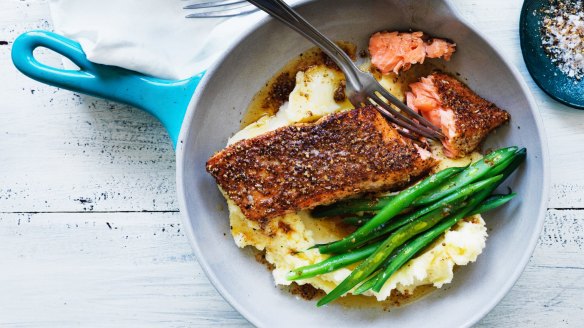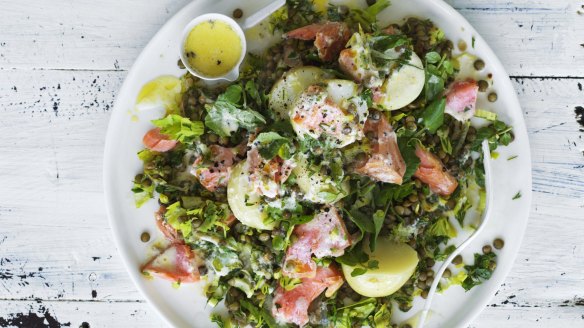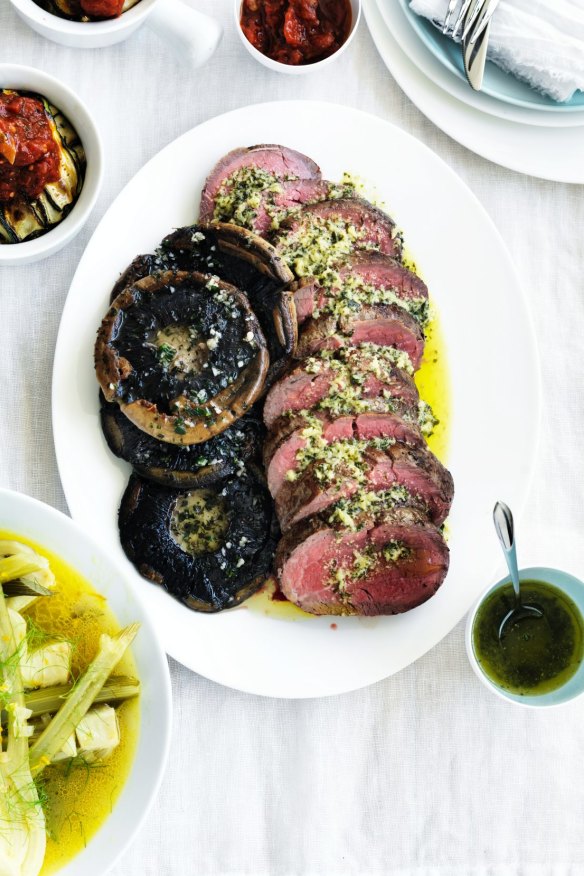Horseradish: Everything you need to know

- Jill Dupleix's pastrami salmon with horseradish mash
- Recipe collection: 40 horseradish recipes with kick
This hot root has been bringing zing to dishes since ancient Roman times. It has been embraced by the latest generation of chefs, who are grating its white and knobbly flesh to brings sinus-tingling vigour to meat, fish and vegetable dishes. Winter is the season when it is at its most potent.

What is it?
A native of Europe and a member of the brassica family, horseradish is a relative of cabbage, mustard and wasabi. Its leaves and roots contain a natural pest repellent.
When the plant cells are crushed, they release an enzyme that reacts with a compound called glucosinolate to produce allyl isothiocyanate.
This is the active ingredient in mustard oil, a powerful antioxidant capable of irritating the soft membranes of the mouth, nose and eyes.
Why do we love it?
"I love the freshness, heat and punch – the way fresh horseradish cuts through fat and richness," says chef Oliver Edwards, from Melbourne's Hazel. "But I can't stand the commercial muck in jars."
He grates horseradish finely into creme fraiche with a drop of lemon juice and leaves it overnight to build heat and flavour, then serves the house-made horseradish cream under cold-smoked barramundi, which is finished with a little more freshly grated horseradish.
Chef Richard Purdue, from Margaret restaurant in Sydney's Double Bay, says, "growing up Jewish, horseradish had huge resonance, whether at the Seder dinner, where it represented the bitterness of the years of slavery under the Egyptians, or when my grandfather would grate horseradish, mix it with a little vinegar and serve it with the fresh flathead he caught in Pittwater. I love it with steak and we always have some to serve with the grilled beef at Margaret."

How do you use it?
Peel it and grate it. Horseradish will not become hot and spicy until the cell walls are broken open.
- A Microplane grater is perfect but chopping it finely with a sharp knife will do the job.
- A little vinegar or lemon juice will stop it oxidising and will make a stable dressing that will last, covered in the fridge, for several days.
- Mix this with mustard, black pepper and a little sugar, rub all over a beef fillet and roast in a hot oven to form a tangy crust.
- Finely grate horseradish, mix with a little salt and serve alongside sashimi. It is not as good as fresh wasabi but is better than the powdered stuff.
- Fold fresh horseradish through creme fraiche to make a sauce to dress a salad of smoked trout and beetroot.
- Potatoes love horseradish cream, while beef fillet can enjoy a little kick of mushrooms and nose-tingling horseradish butter.
Where do you get it?
You'll find fresh horseradish in greengrocers, specialty food stores, markets and farmers' markets. Look for pump roots and firm creamy white skin. Store them in the crisper in the fridge or freeze whole roots, where they will keep for up to six months without deterioration. Grate from frozen.
Send your culinary conundrums and ingredient suggestions to brainfood@richardcornish.com.au or Twitter and Insta @foodcornish
Appears in these collections
- More:
- Food
- Brain food
